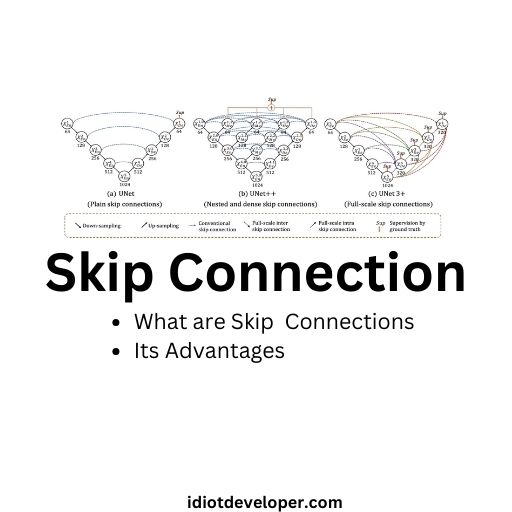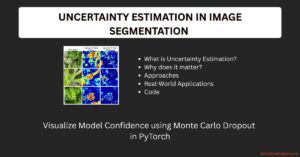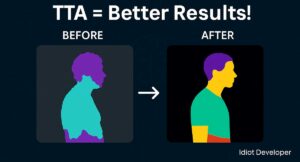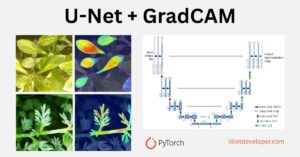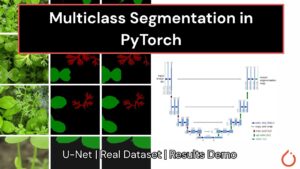Image segmentation, a fundamental task in computer vision, involves partitioning an image into multiple segments to simplify its representation. One of the critical advancements in image segmentation architectures is the integration of skip connections, which have revolutionized the field by improving the accuracy and efficiency of segmentation models.
What are Skip Connections?
Skip connections, also known as shortcut connections. These are connections that bypass one or more layers in a neural network. Instead of solely propagating forward through the consecutive layers, skip connections allow information to flow across different layers, typically from earlier layers to deeper ones or vice versa.
Skip connections are introduced in the UNet paper by Olaf Ronneberger and his team in 2015 as a way to improve their performance.
Advantages of Skip Connections
- Addressing vanishing gradients: Skip connections mitigate the vanishing gradient problem by providing alternative paths for gradient flow during training. This enables more effective optimization, particularly in deeper networks.
- Promoting feature reuse: Skip connections facilitate the reuse of low-level features by passing them directly to higher layers. This helps preserve spatial information that gets lost during the pooling operation in the model. Skip connections also help capture fine-grained details, leading to more robust representations.
- Enhancing network expressiveness: By enabling the fusion of features from multiple scales and levels of abstraction, skip connections enhance the expressiveness of the network. This allows the model to learn both global context and local details simultaneously, leading to improved segmentation performance
Skip Connection in Architecture
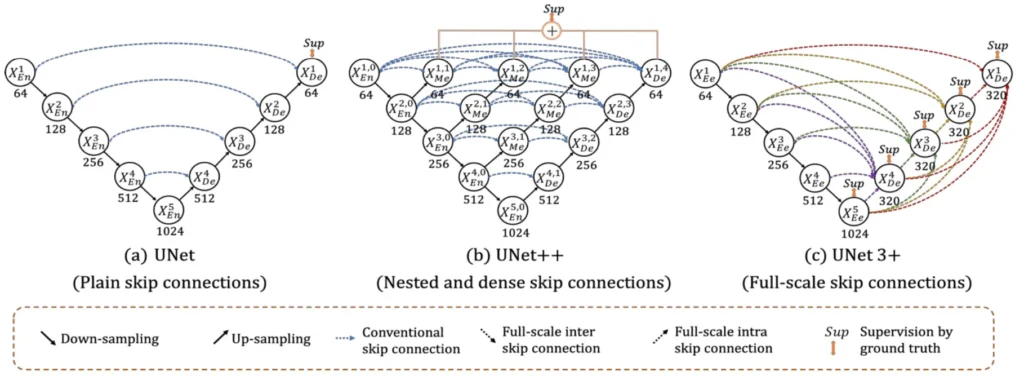
UNet
UNet, introduced by Ronneberger et al. in 2015, is a seminal architecture widely used for biomedical image segmentation. It consists of a contracting path, which captures context, and an expansive path, which enables precise localization. Skip connections are employed by concatenating feature maps from the contracting path to the corresponding layers in the expansive path, allowing the model to combine high-resolution features with contextual information.
The skip connections in UNet are implemented as direct connections between the corresponding encoder and decoder layers. While serving the purpose of facilitating the flow of information, these connections cannot effectively capture intricate details and nuances across various scales, limiting the model’s ability to discern fine-grained structures.
Read More:
UNet++
UNet++, an extension of UNet proposed by Zhou et al. in 2018, further enhances segmentation performance by introducing dense and nested skip connections. It incorporates multiple levels of skip connections between the contracting and expansive paths, enabling richer feature fusion across different scales. This hierarchical skip connection scheme facilitates more effective information flow and improves the model’s ability to capture both local and global context.
The dense and nested skip connections aims to enhance information exchange between encoder and decoder layers, allowing for a more comprehensive exploration of multi-scale features. Despite this improvement, UNet++ still falls short in explicitly addressing the capture of full-scale information, thereby limiting its capacity to discern precise positional and boundary details.
Research Paper: UNet++: A Nested U-Net Architecture for Medical Image Segmentation
UNet3+
UNet3+, an evolution of UNet and UNet++, was introduced by Huang et al. in 2020. It incorporates full-scale skip connections to enable extensive information exchange between layers. By densely connecting all layers within each resolution level and across different levels, UNet3+ promotes feature reuse and facilitates the learning of highly discriminative representations, leading to superior segmentation accuracy.
UNet3+ strategically integrates both smaller and same-scale feature maps from the encoder, alongside larger-scale feature maps from the decoder, at each decoder layer. This novel full-scale skip connection design enables the model to adeptly capture fine-grained details and coarse-grained semantics across the entirety of the image, thereby fostering a more nuanced understanding of the medical image content. Additionally, UNet3+ achieves this heightened efficiency with a reduction in overall parameters, solidifying its position as an advanced model in medical image segmentation.
Research Paper: UNET 3+: A FULL-SCALE CONNECTED UNET FOR MEDICAL IMAGE SEGMENTATION
Conclusion
In conclusion, skip connections play a pivotal role in enhancing the performance of image segmentation models by promoting gradient flow, facilitating feature reuse, and enabling multi-scale feature fusion. Architectures like UNet, UNet++, and UNet3+ leverage skip connections to achieve state-of-the-art results in various segmentation tasks, underscoring the significance of skip connections in advancing the field of computer vision.
